The Flatwoods Monster Decoded
Posted by: Loren Coleman on November 6th, 2007
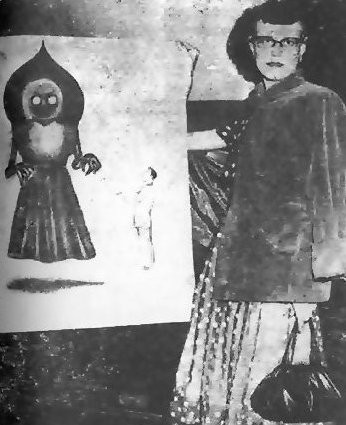
The date was September 12, 1952. The place, Flatwoods, West Virginia.
On that crisp fall day, Kathleen May (pictured), Eugene Lemon, 17, Neal Nunley, 14, Eddie May, 13, Teddie May, 14, Ronald Shaver, 10, Teddie Neal, 10, Tommy Hyer, 10, and Lemon’s big old dog, climbed to the top of a hill and saw a “monster.”
They immediately felt they had to run, as fast as they could, someplace.
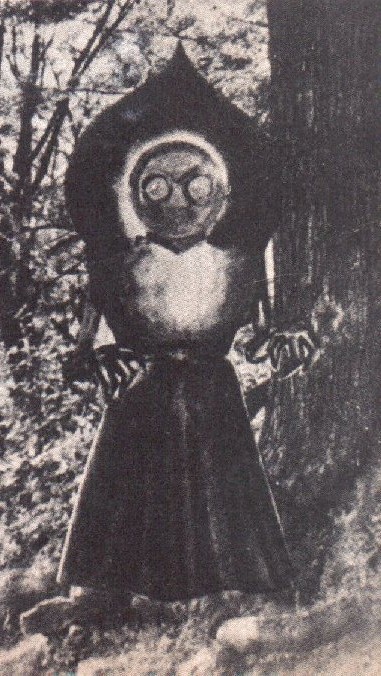
The huge dark figure with glowing eyes and a head “like the ace of spades” blocked their path. About 12 feet high (4 meters), the figure had a reddish face and seemed to “glide” (as cryptozoologist Ivan T. Sanderson wrote) toward the eyewitnesses, who fled in terror.
The thing was said to be over six feet tall to the monster’s waist, and as opposed to “red” or “orange” eyes as noted in news stories, the witnesses all agreed the eyes’ illumination seemed to be pale blue in color, in records Sanderson kept.
Eugene Lemon fainted.
Grabbing Lemon’s limp body, the group instantly started doing what the dog had done moments earlier. They all turned tail and started running down the hill as fast as they could. Little Tommy Hyer would later tell Ivan T. Sanderson that he crawled under the fence to get away, but that Kathleen May cleared the six-foot gate without opening it.
The dog who had ran first to the bottom of the hill, vomited, then died two days later.
And the rest is history. Or so it once seemed, before postmodernism fell from the sky. Read on.
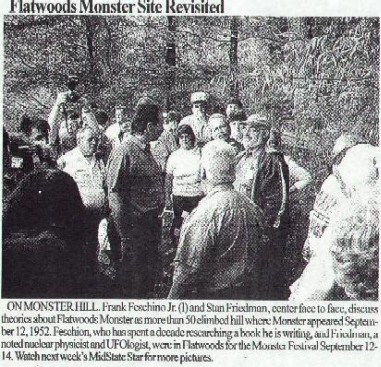
The old Bailey Fisher property still exists largely untouched, just as it did back over 50 years ago in the little town of Flatwoods, off the big interstate next to Sutton. You will pass a huge signpost that acknowledges the event today at the town limits, reading: “Flatwoods, Home of the Green Monster.” The hill where Kathleen May and the young men saw the Monster is easy to find behind a used car lot, but respect that this is private land, posted with no trespassing signs. You can see it from a distance, from the public road, through the trees.
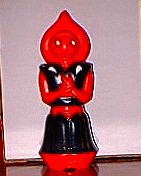
It looked worse than Frankenstein. It couldn’t have been human.– Kathleen May.
Yesterday, I blogged about the implications for cryptozoology, as the term “cryptid” explodes beyond the boundaries of our field. I attended various panels at the Twenty-First Annual Conference of The Society for Literature, Science, and the Arts 2007, recently held in Portland, Maine. The event was called SLSA ’07: CODE.
While my concentration was keyed on the cryptozoology and cryptid papers at the conference, I began my first day by attending a four-paper presentation about Gray Barker and Flatwoods. This was a panel that needs to be talked about separately, as the presenters discussed these matters without any hint of cryptozoology in the air.
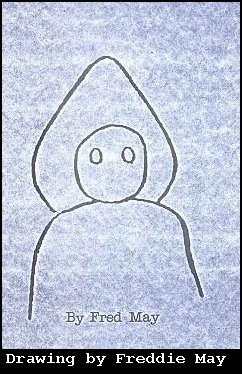
The panelists were mostly researchers from the University of West Virginia (UVW). The panel was entitled “Cyborg Monsters, Literary Hoaxes, and the MiB: from the Saucerian Archives of Gray Barker.” It held some interest for me, as they discussed the research into the Gray Barker archives in Clarksburg, and their view on the Flatwoods Monster. They mentioned many people I had worked with or have known, such as Ivan T. Sanderson, James Moseley, John Keel, and Barker, so the material was firsthand familiar to me.
The individual papers were Sandy Baldwin’s “The Great Hoax: Gray Barker’s saucerian writings and the limit of techno-scientific discourse,” Nick Perich’s “They Knew Too Much: The Men in Black and the Ends of Knowledge,” and Nick Hales’ “How to Make a Myth: The Flatwoods Monster as Cyborg.” All three of those men are from UVW. The last paper was a multimedia show by Brown University’s artist Alan Sondheim, entitled “Gray’s Anatomy: How to make a flying saucer.”
In general, the panel was interesting as I watched how Barker, who is seen as a hoaxster by many ufologists, is now being viewed by these men of academia. I imagined, as I was listening to them, how university professors might study Ray Wallace in future academic research on the history of Bigfoot, placing Wallace front and center as the primary and pivotal figure. A vision of just such an imagined panel flashed, with horror, before me as I was watching this session about promoter and prankster Gray Barker.
Of course, for the entire panel time – almost two hours – they didn’t know I was there, and so I felt like I was an alien in the room watching these intellectual humans giggling their way through a few parts of their papers. It seemed relatively easy to get an academic chuckle by making fun of the contactee stories of George Adamski or of Gray Barker’s prose or poems. The source of the ridicule was not because Barker was a closeted gay, which was acknowledged and moved away from, of course, but because Barker believed in and played games within the wonderful world of “flying saucers.”
I did feel like a spy from the outside (actually even outside of ufology), watching an academic insiders’ gathering having so many laughs at the expense of ufology.
They seemed to understand who Barker was but they decided to elevate him to an even grander status, probably merely as a result of the archives being nearby and thus he is the focus. To hear them, Barker was the center of the universe of “Saucerian” matters (the term of Barker’s they used throughout their papers to talk about ufology).
That’s all well and good, but the remarkably high-brow joking got tiring by the end of their presentations.
Because these scholars live with Gray Barker’s archives in their own backyard, in the library at Clarksburg, West Virginia, they are thoroughly documenting and studying it, from their point of view. I’m actually glad they are, and I can have a bit of a sense of humor about all of this if the end result is good scholarship, which it is obviously their goal.
Back to Flatwoods. All of the four presentations were worthy of my close awareness, but I wanted to pay special attention to the Flatwoods one.
Nick Hales’ abstract of his paper, “How to Make a Myth: The Flatwoods Monster as Cyborg,” follows:
Gray Barker adroitly integrated a host of diverse texts into what constitutes an ultimate postmodern novel/anti-novel, the Gray Barker archive: a hodge podge of correspondences, newsletters, sci-fi stories, photographs, alien seeds, amateur metaphysical musings, folklore, etc., most of which have the alien Other as a central thematic. West Virginia, where he resided and which Barker dubbed “the mini Bermuda triangle,” was indeed a rich resource for Barker’s vivid fictive and myth-making imagination.
West Virginia’s location at the margins of American cultural and economic life lent itself to a production of strange folklore texts: mysterious swamp gas light shows, ghost stories, monsters and alien abductions. One of the “texts” from which Barker drew is the Flatwoods Monster encounter of September 12, 1952 in Braxton County WV. In this paper I will look at the way the Flatwoods Monster emerged as a text both at the local level as folklore and at the national level as one of series of alien encounters during the Cold War.
I’m particularly interested in the way Barker folded the Flatwoods monster myth into his extant archive and the way he helped to develop and define the myth. The Flatwoods Monster emerged as a strange hybrid between monster, alien, and rocket ship. What is most intriguing about the Flatwoods Monster is just how early, like other alien abduction texts, it prognosticated the posthumanist transformation ushered in by the Cold War.
The Flatwoods Monster was a kind of cyborg Other developed as folklore before the formal text of the cyborg was produced in the early 1960s. – Nick Hale, “How to Make a Myth: The Flatwoods Monster as Cyborg,” SLSA ’07: CODE, November 1, 2007.
Hale’s paper, due to the pivotal role of Gray Barker in the beginning of the history of the Flatwoods Monster, was intriguing to watch and hear unfold. Hale said several things I have a different point of view about, such as implying that Ivan T. Sanderson called West Virginia a “vile vortex” or that, in some way, Kathleen May is responsible for the shift in drawings of the Flatwoods Monster or even of the shifting stories that you can read in each new writer’s retelling. These “narrative vortices,” Hale said, were part of the moving landscape of Barker’s world. (I don’t recall Sanderson saying West Virginia was a vortex, but he may have; I certainly know that eyewitness stories shift due to editors, authors, and media changes in the accounts, especially in the case of the Flatwoods scenario. Is that Kathleen May’s fault, as impied by Hale?)
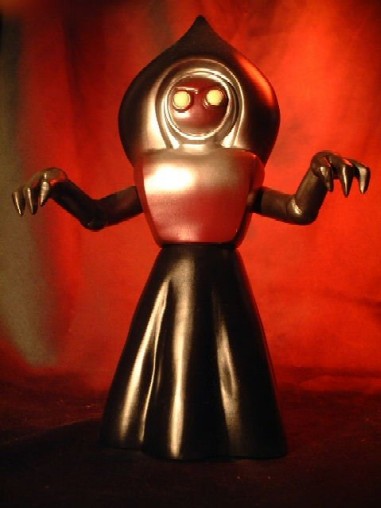
One solid area of agreement I have with Hale’s presentation was his dissection of the recent complete rewriting and revisionistic history of the Flatwoods Monster into some kind of robotic cyborg, as a tool of a vast governmental conspiracy. Hale noted that the level of paranoia and revisions of the original story have been extreme in recent years, traveling far from anything in the archives, the historical record or the eyewitnesses’ sightings.

The crowd of 25 or so were quiet after the presentation, and no one wanted to ask questions or respond. So I stood up, and was allowed to be a “respondent.” I didn’t mention the vortices subject, mostly because I forgot it for the moment to mention the following points.
I briefly identified myself, and set out to share a little information that countered the incorrect statements of historical fact that were made in their talks:
1) They were unaware of the reality of Carlos Allende, who was an actual historical figure named Carl Allen, a con man who created the Philadephia Experiment fiction. The presenters appeared to wish to pin many of Allende’s activities on the publisher/hoaxster Barker;
2) Allende most assuredly was the source of the notations in the Vero edition, not Barker;
3) Barker did not “cause” M. K. Jessup’s suicide in 1959, by pushing him over the edge; Jessup’s own depression and personal problems apparently did;
4) Barker superimposed the drawing of the Flatwoods Monster on a photograph of a WV site to show what the incident would look like in situ (a typical technique in studying ufological events), not to mix mediums to confuse realities;
5) I pointed out that the papers ignored the overt influence that the subculture of being gay had on Barker’s life and his pornographic writings, as many of the jokes with James Moseley were an artifact of that; the presenters were unaware that rumors had circulated around George Adamski that he had seduced young boys; and finally,
6) The Flatwoods incident did not happen in a vacuum as there were several monsters and “meteorites” seen around West Virginia that night and the following one.
During my comment on the photograph, Alan Sondheim brought up – I thought out-of-the-blue – the fact that a local informant had told the researchers that he was the source of the Flatwoods Monster, and it was all a hoax. Of course, I pointed out that anyone, years later, can always step forward and claim a hoax for their 15 minutes of fame. Sondheim felt that was a dismissal, and the claimant wasn’t out for glory.
I found our exchange amusing. Yes, Sondheim might have been right about my counter, but what did his point have to do with the photo? We were engaging in an intellectual academic debate that hardly had anything to do with any realities. We quickly caught ourselves, I sat down, and then Alan asked if I had any more comments.
I mentioned I’d talk to them later, after they dismissed the panel.
I spoke to Sandy Baldwin privately soon afterwards, and we promised to email each other more about their project.
The next day, as it turned out, I gave the team a copy of my 2002 Mothman book to assist them with some insider-ufology clarifications. In Chapter 1, “Flatwoods,” of the book, for example, I document that the story includes several similar sightings of “monsters” in that part of West Virginia. Indeed, Flatwoods does exist in a context, which is historically, geographically, sexually, and culturally significant. These scholars know that, but seemed to merely need to keep looking beyond Clarksburg to get more of the code.
Sometimes the SLSA folks can be strangers in a strange land too.

The SLSA ’07: CODE papers on Barker and Flatwoods were good, and like the souvenirs I used throughout this blog to illustrate it, the cultural impacts, interpretations, and implications of the Flatwoods Monster today go far beyond West Virginia.
About Loren Coleman
Loren Coleman is one of the world’s leading cryptozoologists, some say “the” leading living cryptozoologist. Certainly, he is acknowledged as the current living American researcher and writer who has most popularized cryptozoology in the late 20th and early 21st centuries.
Starting his fieldwork and investigations in 1960, after traveling and trekking extensively in pursuit of cryptozoological mysteries, Coleman began writing to share his experiences in 1969. An honorary member of Ivan T. Sanderson’s Society for the Investigation of the Unexplained in the 1970s, Coleman has been bestowed with similar honorary memberships of the North Idaho College Cryptozoology Club in 1983, and in subsequent years, that of the British Columbia Scientific Cryptozoology Club, CryptoSafari International, and other international organizations. He was also a Life Member and Benefactor of the International Society of Cryptozoology (now-defunct).
Loren Coleman’s daily blog, as a member of the Cryptomundo Team, served as an ongoing avenue of communication for the ever-growing body of cryptozoo news from 2005 through 2013. He returned as an infrequent contributor beginning Halloween week of 2015.
Coleman is the founder in 2003, and current director of the International Cryptozoology Museum in Portland, Maine.


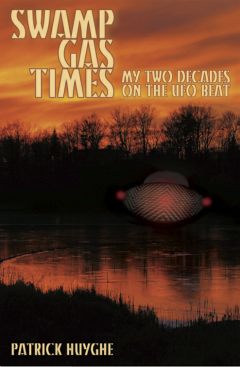









How odd. Seems that hindsight’s 20/20 reputation has become tarnished in this era of instant communication and hi-tech trickery. I corresponded with Gray Barker in the mid-50s, and have his “They Knew Too Much…” book; he treated the Flatwoods incident with integrity (in my opinion), and tried to integrate it with the other aerial and earthy mysteries of the day.
Now, in retro, his personal persuasions and professional associations come under derisive “academic” discussion, obscuring the realities, blurring the edges, confusing the issues.
Hard to separate truth from fiction, anymore.
Always has been, apparently.
interesting article about the flatwoods monster. thanks bill green 🙂
Interesting article, Loren.
That you were there to eyewitness the conference is appreciated by me.
Interesting stuff, Loren. Thanks.
That thing kind of reminds me of the Hopkinsville Goblins story. I am not usually a fan of paranormal stuff, but I have to admit I like “weird creature” stories(Dover Demon, Enfield Horror, etc)
This really sounds like it was a fascinating conference!
I grew up in the area and while in West Virginia last year I stayed at the Flatwoods Motel. The area has changed little from the 50’s other than the interstate going past it.
I’m curious, Loren, did the panel seem to have an agenda or did it pursue some form of logic of “getting to the bottom of the [alleged] story”. In other words did they seem to have open minds or – it was a hoax because “X” said or wrote it was. Also, was anyone who witnessed the incident re-interviewed for this panel? My concerns are this: I have witnessed unusual events and when telling someone about it, the usual response was “what were you drinking at the time?”. Everytime, however, I was sober, but the ridicule seems to come first and then just disbelief. I wonder if just certain persons “see” unusual things and all the rest wouldn’t believe what they saw and/or experienced if it bit them. The late 40’s and all throughout the 50’s and 60’s was rife with UFO and paranormal events possibly brought on by heightened cold war tensions and ground and air blasts of fission and fusion devices. Could this have been the impetus for experincers? I don’t know. Is there data for a rise in paranormal events before, during and after nuclear testing? That would be very interesting to see.
Back to the panel, I hope you didn’t feel like a fish out of water and I wish I could of been there.
The panel presented a scholarly and academic examination of the Gray Barker archives. It wasn’t about the reality or unreality of the materials, eyewitness accounts, or incidents. It was a postmodernistic analysis of the codification that takes place, the venues and genres that pour out from the material, the art and processes, and the mixing of monsters and cyborgs.
There was no thought to proving a hoax or not, for that would be a literal, empirical reading of these events. The scholars on this panel were not dealing in that realm, although they could not help but sometimes slip into that stance, because, after all, they are only human.
Hello, Loren! And everybody else as well!
I’m a brand new whippersnapper. I’m excited to be part of this community!
One question: I’m not knowledgeable enough about the Flatwoods monster–(I know enough about it from Loren’s books and Wikipedia, though)—
Has it ever been conjectured that the monster was one of Keel’s interdimensional tricksters?
Or simply a “metallic” alien?
Seriously. Anyone?
Saint Vitus, one reason it might remind you of the Kelly goblins is the name “Sutton”. It’s the town next to Flatwoods and the name of the family that was besieged one night by goblins, aliens, eagle owls or Oompah-Loompahs.
I would be interested in seeing another interview with the eye witnesses 50 years on.
Discovering what they saw, thought and think now. How is their health…(the dog died)
OK. I get the feeling that this is a bunch of churlish academics looking at the Flatwoods problem like it is peculiar to a small town in West Virginia, having its beginning and its ending right there, lasting only one night — additionally reiterating the discredited explanations of hoaxes, meteors, and backwoods bumpkins to explain 12 foot green monsters wearing skirts with fishbowls on their heads.
Not so, though, as you point out, when you take one night of recorded turmoil and place it in the context of years of serious involvement by government and military, months of recorded sightings everywhere over the US (in perhaps the biggest UFO flap ever), the “shootdown” order, and the unstinting testimony of the persons involved and recorded in the media of the day, et al.
Just canted academics counting self-important beads and prosecuting the usual hubris regarding things they are not really informed about? I suspect so.
LC, as our fly on the wall, you are to be commended for pricking the nose-bubbles of these smirking academicians and returning them to reality. I suspect they hate you for it.
That said, Frank Feschino, imo, has written the definitive book on the subject:
http://flatwoodsmonster.com/
The story is more credible than an unthinking West Virginia intelligentsia will allow in ther affected hubris, and the group is singularly unmindful that a true history of the Flatwoods Monster and “Shoot Them Down” is economically fortuitous, tourist-wise, for a West Virginia dying on the federal vine!
I’m not saying they should promote crap for dollars, but promote real history for same… forsaking their uninformed hubris, institutional arrogance, and a further reason to discount a niggardly science… forsake the preceding to be intelligent, progressive and brave!
The commentors seem to be unaware that we are living in a computer simulation as mentioned at http://www.simulation-argument.com/ and http://en.wikipedia.org/wiki/Simulism
Living in a simulation, we can expect that we might see anything at anytime. We can also expect that so-called “eye witnesses” might not have experienced identical versions of the simulation. An example of this situation was the Fatima vision. More than 50,000 people saw several versions of the simulation at that place. Thanking you for your attention to these ideas.
How can anyone investigating the matter of Carlos Allende NOT know about the reality of Carl Allen? That’s just downright sloppy research.
I have to admit, the Flatwoods case has always interested me, and by all accounts it is quite a compelling case, especially when seen in context.
The “cyborg” notion concerning the entity reminds me of how the Aztecs supposedly first viewed the Spaniards- as some sort of multi-headed, centaur-like being, owing to them riding horses, which the Aztecs had never seen. Perhaps much of what was seen of the Flatwoods entity was simply clothing. That’s always been my interpretation of the so-called “Ace-of’Spades” head.
Incidentally, Jerome Clark reports in his book “Unexplained” that the entity (Or something similar) was seen looking into a window in the early morning of November 22, 1973 in Joliette, Quebec. Oddly, a very panicked dog was present for that encounter too.
I know you like to play the name game, Loren, so my eyes were immediately drawn to the last name of one of the witnesses- the 10-year-old Ronald Shaver. Richard Shaver, of course, was the origin of the “Shaver Mystery” concerning a war between 2 subterranean civilizations- the Teros and the Deros (Detrimental Robots). Wikipedia adds this-
“Though generally confined to their caves, Shaver claimed that the Deros sometimes traveled by spaceships or rockets, and had dealings with equally evil extraterrestrial beings.”